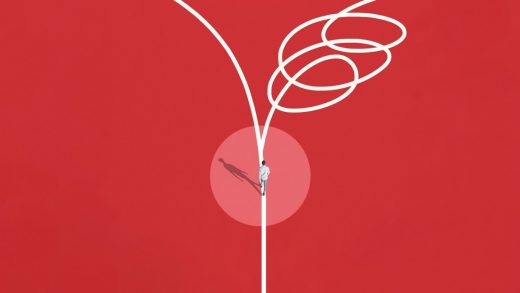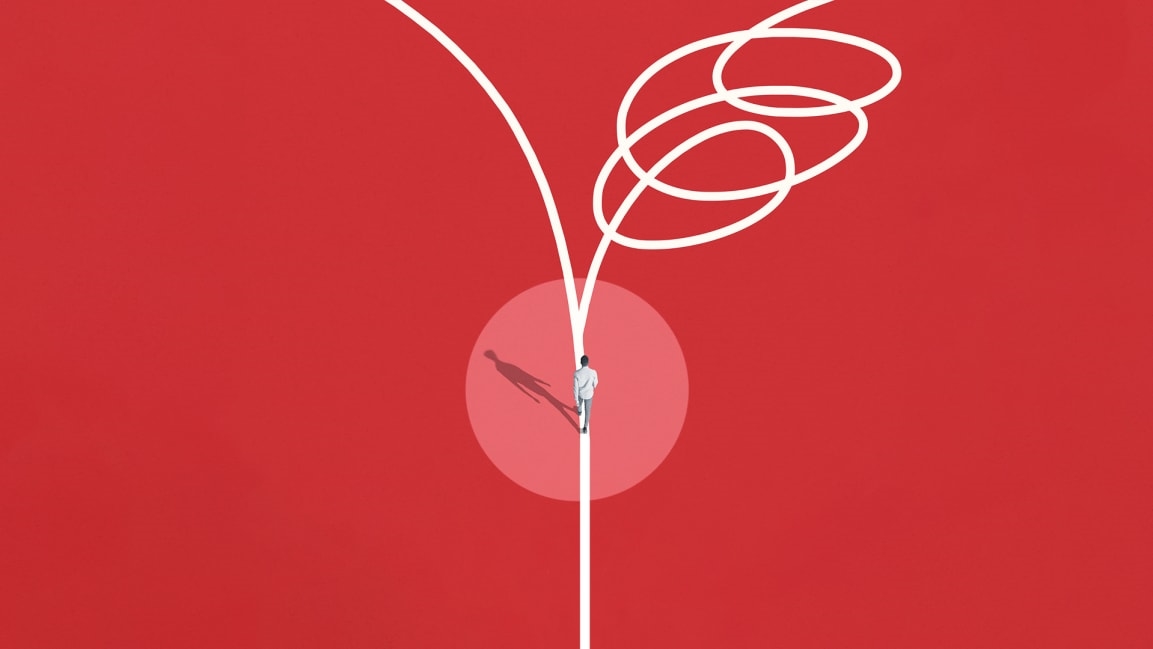What will COVID-19 be like in 2022? More of the same, but maybe a bit easier
On December 21, just days before a deluge of Americans walked out to their driveways, suitcases bulging, primed for holiday travel, President Joe Biden delivered a message: “I know some Americans are wondering whether you can safely celebrate the holidays with your family and friends,” he said. “The answer is, yes you can: If you and those you celebrate with are vaccinated—particularly if you’ve gotten boosted.”
It feels like there are two realities now, maybe even three: one for people who are vaccinated (and possibly a separate one for those who are boosted) and one for those who are not. Omicron, the latest COVID-19 variant, is coming like a wave over the United States. Everyone will probably get it. But, some say, what happens when you finally get that positive test may depend on whether or not you’re vaccinated.
“We are going to see a significant stress in some regions of the country on the hospital system, particularly in those areas where you have a low level of vaccination,” Anthony Fauci, director of the National Institute on Allergy and Infectious Diseases, told CNN host Jake Tapper. “It’s going to be a tough few weeks to months as we get deeper into the winter.”
In New York, where cases are raging, Northwell Health System CEO Michael J. Dowling says that 80% of the patients who are currently hospitalized with COVID-19 are not vaccinated. “This is an unvaccinated issue. If everybody was vaccinated then the numbers in our hospital right now would be very minimal indeed,” he says.
We are trudging toward endemicity, a time when COVID-19 will be as ordinary as the ocean: a killer that for the most part mundanely coexists with us. But we are not there yet. At a recent event, Dr. Celine Gounder, clinical assistant professor of medicine and infectious diseases at the NYU School of Medicine and Bellevue Hospital, said COVID-19 has not yet embedded itself in a predictable way. The way to tell whether a disease is endemic is to look at the waves of infection. When a disease is endemic, the number of cases over the course of a year looks like a series of waves on a chart, Gounder explains. When there’s an epidemic of a disease, such as the flu, rapidly spreading at certain points of the year, it appears in spikes.
“We’re still very much epidemic,” she says, though she believes COVID-19 infection will eventually settle into a more manageable ebb and flow.
Not just about vaccination
Could COVID-19 become endemic in some places before others? WalletHub reports that the District of Columbia and California are the safest places to be amid the pandemic because of their high vaccination rates and low hospitalization and death rates. Levels of COVID-19 cases in California are relatively stagnant. But that may just be the calm before the storm. Hawaii, ranked No. 3 on WalletHub’s list of safest places amid the pandemic, is starting to see a rise in cases.
What does it even mean to be safe from COVID-19? At a recent press event, New York City Mayor Bill de Blasio said the city, which is seeing a torrent of cases, is somehow guarded against the virus. “We are the safest place in America when it comes to COVID, we gotta stay that way,” he said, before telling New Yorkers to get the booster. (For what it’s worth, WalletHub says New York State is not even in the top 10 safest places.)
Gounder says safety is not as simple as high vaccination rates and booster shots. “The vaccinated and unvaccinated continue to mix, and while SARS-CoV-2 transmission is at a steadier state among the vaccinated, we’re currently seeing a lot of transmission even among vaccinated/boosted people because the virus has mutated,” she wrote via email. “New variants can throw us back into an epidemic phase, even among fully vaccinated and boosted people.”
Our experience with the flu can help us understand where COVID-19 is going, she adds. Influenza, which is an annual epidemic in the U.S., becomes epidemic because over time the virus spreads, replicates, mutates, and new variants arise. Getting vaccinated slows transmission and the emergence of new variants, but eventually it mutates and a new strain emerges, which leads to epidemic spikes in cases and on and on.
“The more we allow the virus to spread from person to person, replicate, and mutate, the more often variants will arise,” Gounder says, noting that when that happens, prior immunity from infection or vaccination is not as protective, “analogous to what happened with omicron.” This is why public health officials have put such an emphasis on vaccination to prevent infection. If the virus can spread, we are all at risk, vaccinated or not.
The effects of the omicron variant may be milder than those that preceded it, according to early data out of the U.K. The New York Times reports that cases of omicron are on average 15% to 20% less likely to be hospitalized. Also, people who do wind up in the hospital may not stay there long. Data shows people with omicron are 40% to 45% less likely to spend a night or more at the hospital. This does not mean that omicron is less dangerous than delta, the paper warns, because omicron, by virtue of being so virulent, will reach more people.
Northwell Health’s Dowling notes that the current rate of hospitalizations at his facility in New York is pretty low, with only a tenth of the hospital capacity being used. He also says, albeit cautiously, omicron’s virulence has an upside. “If people are not that sick and they’re not in the hospital, you’re building up herd immunity, so from that point of view it’s not the worst thing, even though people don’t feel well for a couple days,” he said.
There is hope that COVID-19 will become endemic sometime between 2022 and 2023, according to Trevor Bedford, a computational biologist and scientist at the Fred Hutchinson Cancer Research Center, who spoke with Stat News recently. “Without the variants, we would have been to endemicity this winter, but the emergence of delta and that wave has changed things,” he said. “It’s made this season a bit funny, but I would expect that next winter, 2022-2023, looks like winters are going to look.” We just need to get through next year.
The same boat
For better or worse, we are all in this together. The emergence of new variants will depend on vaccination rates, not just in the U.S., but globally. Much of the world is vaccinated, well surpassing the World Health Organization’s target of having 40% of the globe vaccinated by the end of 2021. However, low-income countries are barely vaccinated at all. The G20 is writing a strategy to get 70% of the world vaccinated by mid-2022. Meanwhile, in the U.S., omicron may push only 27% of vaccinated people to get a booster shot, according to the Kaiser Family Foundation, and many of those who are totally unvaccinated are unmoved by the emergence of new variants and have no intention of getting a shot.
It won’t be the normal we want, but it may be a normal we can live with.
Vaccination will likely creep upward despite all the obstacles (and there are many). In addition, we will need to do everything we can to reduce transmission. That means wearing a mask at the grocery store and other public places when cases are up in our region. It will also mean testing regularly, though that will not come without challenges considering that when cases rage, our whole testing infrastructure collapses. Home tests are sold out everywhere, and in certain cities Americans are standing like soldiers in lines stretched out for blocks trying to get tested. Supply chains and lab capacities are failing. That is why it was not funny when White House Press Secretary Jen Psaki nearly guffawed at the idea of sending rapid tests to every home.
(Psaki, while generally unapologetic, has been chastened by the Biden administration’s decision to distribute 500 million COVID-19 test kits around the country. Unfortunately, they won’t reach Americans until next year).
All of this means that a good portion of next year will be more of the same: a messy public health response. Americans have to continue to mask up, get vaccinated, and stay isolated if sick (a worthwhile general practice regardless). But there is good news. Doctors not only know how to treat COVID-19, they have more tools in their arsenal. Pfizer’s antiviral Paxlovid is going to have a huge impact on hospitalizations. AstraZeneca’s Evusheld, a pre-exposure antibody treatment for immunocompromised people, will still protect against omicron, in theory giving the virus less opportunity to replicate. These wins will help push us into a new normal.
It won’t be the normal we want, but it may be a normal we can live with. We will go into the office a few days a week. We will work from home. We will stay home when we are sick. We will sometimes have to wear a mask. The journey there will be so gradual, we may not even know we’ve arrived.
(36)



